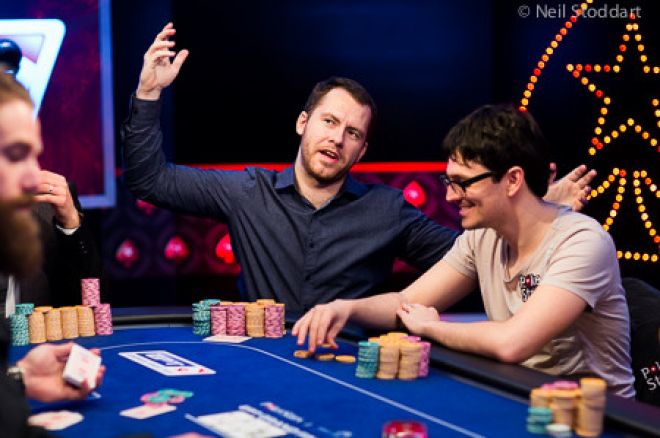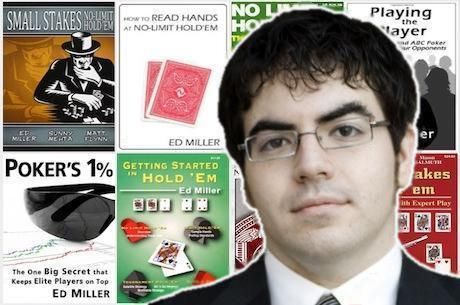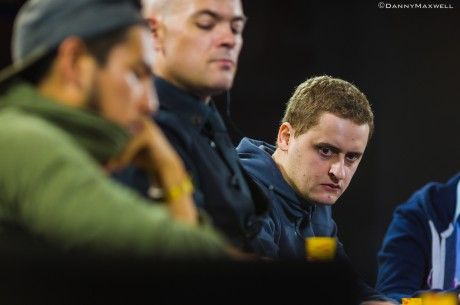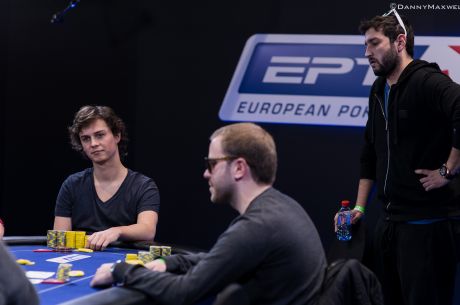Watching ��Jungleman��: Lessons from an Expert at the EPT Grand Final

The European Poker Tour Grand Final is less than two weeks away, with the tour once again set to close its season out at the Monte-Carlo Casino in Monaco. The busy schedule features a whopping 78 events total, with the �100,000 Super High Roller coming right at the start again, a tournament that will no doubt attract poker��s best and brightest once more.
Last year��s �100,000 Super High Roller certainly provided much to delight fans of high-level poker, with the EPT Live stream of the final table featuring numerous interesting hands and inspired play. I relished the chance to play along with some of the world��s best, especially since enough money was on the line to induce everyone to give his strongest effort.
When watching last spring I recall paying particular attention to Dan Cates, a widely respected player who has earned his reputation not only in high-stakes tournaments but also in well-publicized heads-up matches. It was heartening to see Cates make many of the plays that I would have made �� not because I am a tournament expert, but because so much of poker is simply exercising strong fundamentals.
Here I��ll discuss several lessons we can draw from the play of ��Jungleman�� during select hands from that final table.
Calling (and Caution) from the Big Blind
During the final table, Cates surprised the audience and the commentators a few times with his big blind play.
On Hand #50, he called Ole Schemion��s button min-raise with 9?3?. An orbit earlier (Hand #42), after Schemion had opened with a min-raise from late position and Paul Phua had called out of the small blind, Cates had defended his big blind with 7?2?. Cates would later defend with 7?2? against Igor Kurganov��s button min-raise (Hand #80).
These hands made me smile. I��ve written before about how tournament play, more often than cash play, often features players defending their big blinds with junky hands �� and for good reason.
I��m not claiming that Cates would have defended his big blind against a min-raise with any hand. Table conditions, stack sizes, and other considerations surely factored into his decisions. It��s clear, however, that Cates was defending a whole lot of hands. Sometimes poker is as simple as taking great pot odds where you can get them.
It��s worth noting that Cates did not default to aggressive play in these three hands. Twice he missed the board and didn��t put in another chip, and the third time he chose a passive line when he did make a hand. Again, it��s likely that he would have chosen to bluff with his worst hands on certain board textures in certain situations, but the simple point remains that this sort of preflop call can be profitable even if you frequently give up when you miss.
Resisting the Bluffing Urge
I imagine that Cates also defied much of his audience��s expectations with a hand he had played earlier in the day. On Hand #40 of the final table, Cates was second to act and raised with 8?7?. It folded to Schemion in the big blind who called with A?8?.
The flop came A?5?10?. Schemion checked, and Cates made a continuation bet. Even if it��s not correct to bet one��s whole range here, hands with multiple backdoor draws are often good hands with which to stay aggressive on the flop, and 8?7? is such a hand. Schemion called the bet.
On the turn Cates picked up a flush draw with the 10?. Schemion checked and Cates checked behind. This is a strong play that I imagine many players would not make.
When you bet partially on the strength of a backdoor draw, and when the first half of that draw comes in, it��s tempting to keep up the pressure. This is because it��s often correct to keep up the pressure with your newfound equity and the betting initiative.
Here, however, betting is problematic because it��s very difficult to get better hands to fold. Schemion needn��t always have a pair to call this flop bet, but given that Cates raised from early position and that Schemion is out of position, he figures to have at least a pair a lot of the time. Given that the flush draw also paired the ten, Schemion will have either a pair of aces or three tens very often. Both of these hands are unlikely to fold, so it��s wise not to bluff in this situation. (After a river blank, Cates would fold to a Schemion bet.)
Again, I won��t pretend to know Cates��s whole thought process in this situation. I��m confident, however, that he chose not to follow through with a turn bet partly because he was pessimistic about his chances of folding out enough of Schemion��s range. Although constructing perfect flop- and turn-betting ranges is complicated, not bluffing when you can��t get your opponent to fold is much simpler.
Part of the fun of watching these EPT Live streams comes from seeing plays that I��d never think to make. Part of it, though, also comes from seeing the best players exhibit solid fundamentals. When you stick to sound, basic strategies, you will often be making the same plays that world-class players in your situation would make.
Be sure to check out Nate and Andrew Brokos on the Thinking Poker podcast, and for more from Nate visit his blog at natemeyvis.com.
Get all the latest PokerNews updates on your social media outlets. Follow us on Twitter and find us on both Facebook and Google+!








